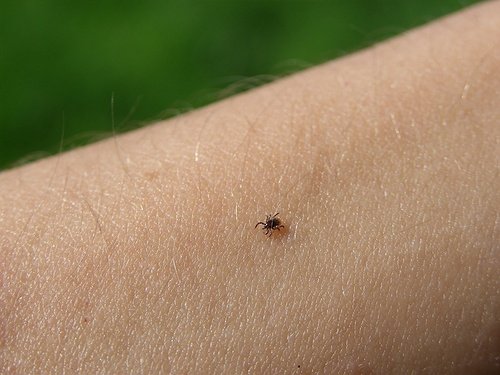East Hampton, NY - May 11, 2015 - The month of May is dedicated to spreading awareness of a prevalent, yet preventable illness–Lyme disease. As soon as the weather begins to warm up on the East End of Long Island, the threat of tick-borne illness escalates. Brian Kelly, tick control expert and owner of East End Tick & Mosquito Control, works to educate East End residents about the prevalence of that threat in an effort to help decrease the number of tick-related illnesses on Long Island.
This year, researchers have hinted that the region’s long and harsh winter may have actually protected the tick population. “Last fall’s leftover adult blacklegged ticks, along with newly emerging adult American dog ticks and Lone Star ticks will only increase in activity from March to May,” said Thomas Mather, PhD of the TickEncounter Resource Center and the Center for Vector-Borne Disease at the University of Rhode Island.
During the spring and early summer months, the transmission of Lyme disease is most commonly due to the bites of immature ticks called nymphs because they are less than 2 mm and difficult to see. In addition to their small size, ticks often attach to hard-to-see areas of the body such as the groin, armpits and scalp. Lyme disease is an acute inflammatory bacterial infection that has been nicknamed “The Great Imitator” because its symptoms are similar to that of many other conditions. If left untreated, Lyme can progress from flu-like symptoms to joint pain and severe fatigue.
According to the Center for Disease Control and Prevention (CDC), there were more than 27,000 confirmed cases of Lyme disease and 9,000 probable cases in the U.S. in 2013. The most heavily affected regions, including Long Island’s East End, are home to a tick population with half of all its inhabitants infected.
Prevention
In order to decrease the risk of tick-related illness maintain a clean, trimmed lawn, cut back branches to let in more sunlight and consider tick collars and sprays for pets to prevent ticks being carried into the home on animals. Additionally, experts recommend that one or two perimeter spray treatments be done in mid-May and mid-June as ticks become increasingly active. “Always be sure to thoroughly check yourself, your family and your pets for ticks after time spent outdoors,” Kelly said. "And give the professionals a call to discuss what preventative methods are available that can be customized to meet your personal needs."
About East End Tick & Mosquito Control:
East End Tick & Mosquito Control is the East End’s first and only tick and mosquito control specialists established in 1997. Licensed under the Department of Environmental Conservation, the fully-insured company is committed to keeping East Enders safe with the most effective and environmentally responsible treatment programs that feature necessary and specialized equipment as well as alternative options to harsh pesticides. Recognized by the Lyme Disease Foundation, East End Tick & Mosquito Control is a member/sponsor of Empire State Lyme Disease Association and Time for Lyme, as well as a supporter of Southampton Hospital’s Tick-Borne Disease Resource Center.










